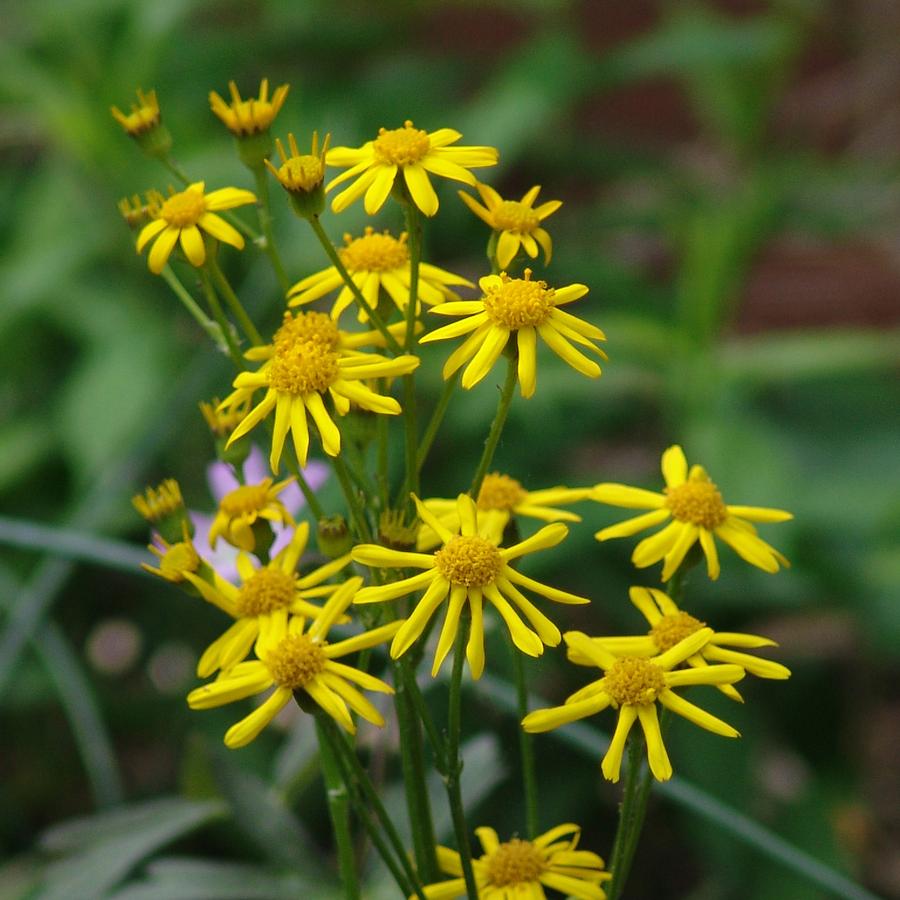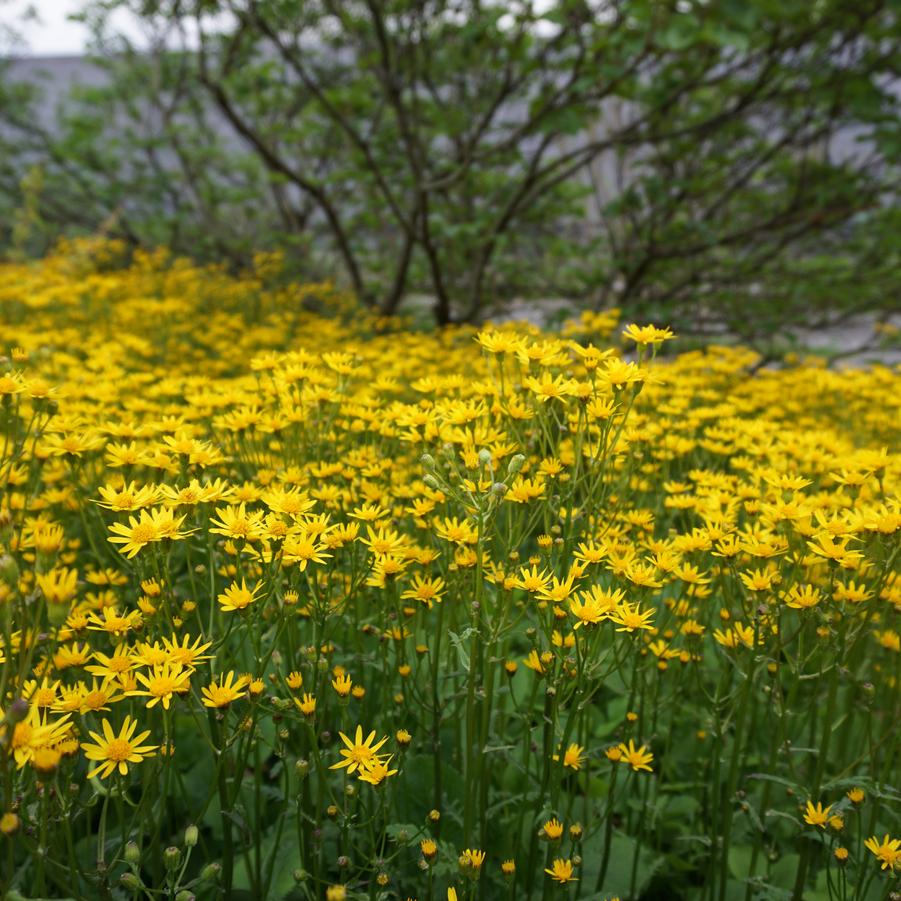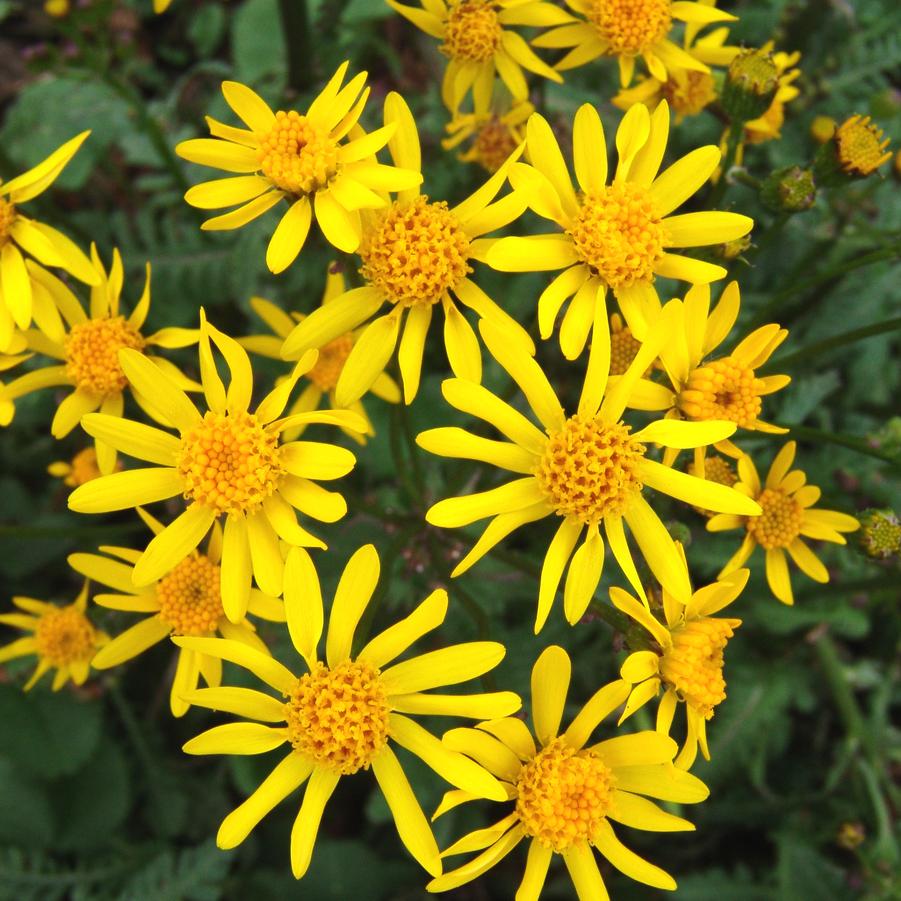





Plant Calculator
Enter the approximate length and width of the area you will be planting and click 'Calculate' to determine how many Packera aurea you will need.
Correct and successful spacing is complex and depends on project conditions. We encourage you to call us at 877-ECO-PLUG for project specific recommendations and further assistance.
Packera aurea
golden ragwort (golden groundsel)
- Category: Perennial, Native
- Hardiness Zone: 4-9
- Height: 12-18 Inches
- Spread: 12-18 Inches
- Spacing: 12 Inches
- Bloom Color: Yellow
Clusters of small golden daisy-like flowers appear over broad, shiny green, toothed basal leaves in May. Strong blooming, even in the shade. A robust groundcover where happy and an excellent cut flower. Self seeds and naturalizes.
Wetland Indicator Status
| • | Falcutative Wetland (FACW) |
Season of Interest (Flowering)
| • | Late Spring / Early Summer |
Propagation Type
| • | Vegetative |
Additional Information about Packera aurea
Clusters of small golden daisy-like flowers appear over broad, shiny green, toothed basal leaves in May. Packera aurea is a strong bloomer, even in the shade, and is a robust groundcover in a happy situation. Golden-yellow blooms make way for fluffy seedheads that self-sow and naturalize. Easy to grow, golden ragwort grows from 6-24” tall and tolerates dry shade conditions. In shaded gardens, where seasonal color can be hard to come by, Packera aurea provides a long season of cheery blooms in early spring as it spreads by seed and roots into dense colonies.
For best performance, Packera aurea prefers consistently moist, well-drained soil in full sun to full shade. As sunlight increases, the requisite soil moisture should also increase. Found in wet deciduous woods, meadows, banks of rivers, streams, and lakes, slopes of rocky ravines, and roadsides from Ontario to Florida and along the East Coast. Trouble-free, no noticeable issues come from this plant and due to a mildly toxic compound in its foliage, this native is deer-resistant.
Packera aurea is one of the top plants we recommend for troublesome areas when a customer is looking for a groundcover that is carefree, dense coverage, deer-resistant, and smothers weeds. While it forms a large mass over time, for those who want to limit the plant’s spread, we recommend cutting back flower stalks before the plant goes to seed by hand or by using a weed whacker. It works well as a groundcover in shade, along the banks of a woodland stream, or any place someone would like to plant something and forget it. In the spring, nectar, and pollen supply small bees and flies, providing a much-needed resource when other plants are not flowering. The foliage is browsed by Gem moth caterpillars.
Growing & Maintenance Tips for Packera aurea
Prefers consistently moist, well-drained soil in full sun to full shade. More sun requires more moisture. Excellent for native and wild gardens as well as color for shady wooded areas.
